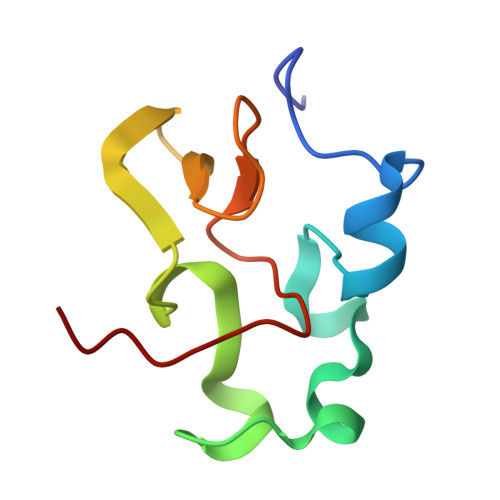Crystal structures of photosynthetic reaction center and high-potential iron-sulfur protein from Thermochromatium tepidum: thermostability and electron transfer.
Nogi, T., Fathir, I., Kobayashi, M., Nozawa, T., Miki, K.(2000) Proc Natl Acad Sci U S A 97: 13561-13566
- PubMed: 11095707
- DOI: https://doi.org/10.1073/pnas.240224997
- Primary Citation of Related Structures:
1EYS, 1EYT - PubMed Abstract:
The reaction center (RC) of photosynthetic bacteria is a membrane protein complex that promotes a light-induced charge separation during the primary process of photosynthesis. In the photosynthetic electron transfer chain, the soluble electron carrier proteins transport electrons to the RC and reduce the photo-oxidized special-pair of bacteriochlorophyll. The high-potential iron-sulfur protein (HiPIP) is known to serve as an electron donor to the RC in some species, where the c-type cytochrome subunit, the peripheral subunit of the RC, directly accepts electrons from the HiPIP. Here we report the crystal structures of the RC and the HiPIP from Thermochromatium (Tch.) tepidum, at 2.2-A and 1.5-A resolution, respectively. Tch. tepidum can grow at the highest temperature of all known purple bacteria, and the Tch. tepidum RC shows some degree of stability to high temperature. Comparison with the RCs of mesophiles, such as Blastochloris viridis, has shown that the Tch. tepidum RC possesses more Arg residues at the membrane surface, which might contribute to the stability of this membrane protein. The RC and the HiPIP both possess hydrophobic patches on their respective surfaces, and the HiPIP is expected to interact with the cytochrome subunit by hydrophobic interactions near the heme-1, the most distal heme to the special-pair.
Organizational Affiliation:
Department of Chemistry, Graduate School of Science, Kyoto University, Sakyo-ku, Kyoto 606-8502, Japan.















